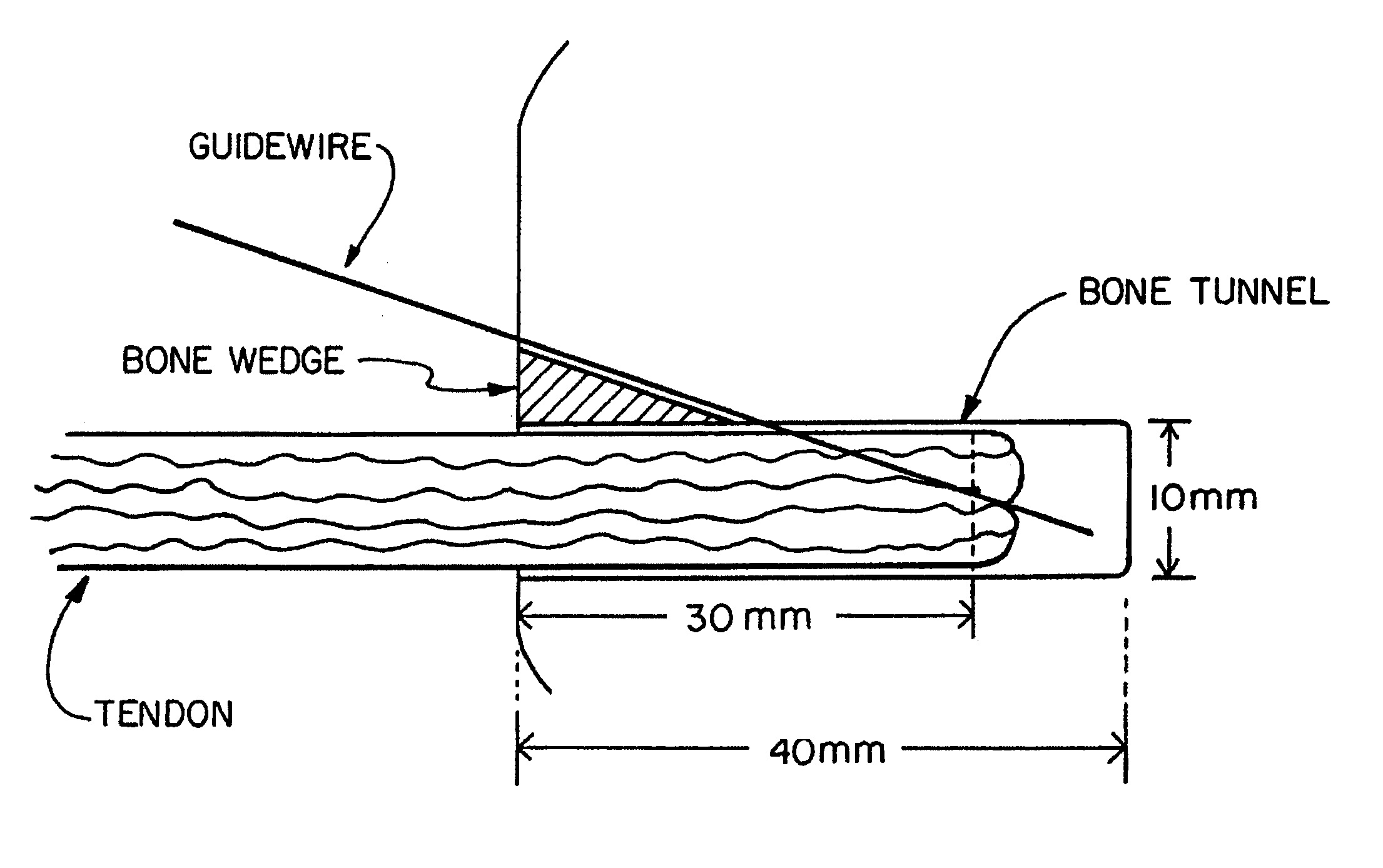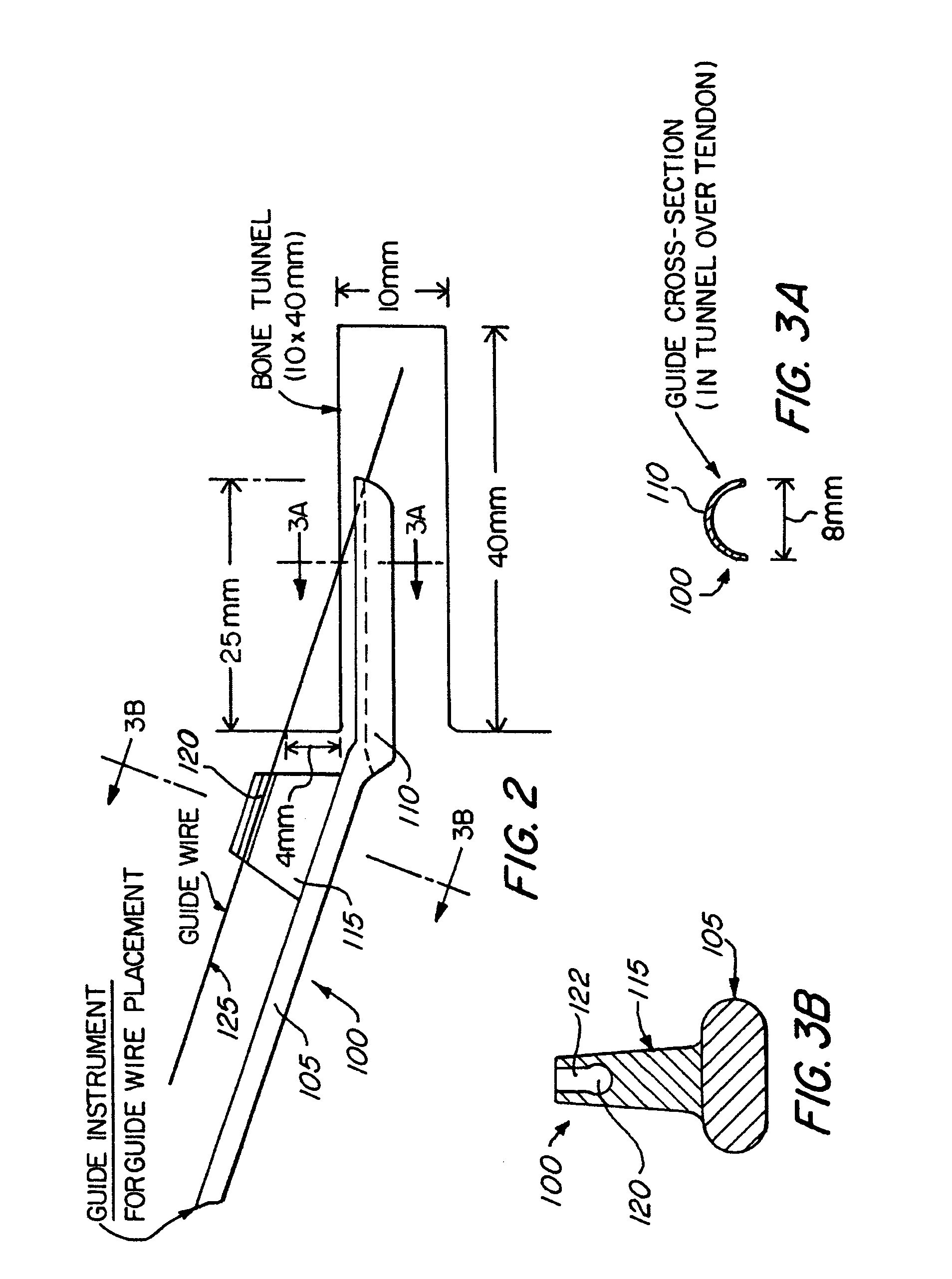Method and apparatus for reconstructing a ligament
a ligament and surgical method technology, applied in the field of surgical methods and equipment, can solve the problems of not being able to fully determine the extent, timing and type of ingrowth occurring on the screw side of the tendon, and not being able to achieve bony ingrowth, and achieve stable fixation, stable aperture fixation, and enhanced fixation
- Summary
- Abstract
- Description
- Claims
- Application Information
AI Technical Summary
Benefits of technology
Problems solved by technology
Method used
Image
Examples
Embodiment Construction
[0051]This detailed description will again use the femoral side of an ACL reconstruction as an example of the multiple uses of this new concept; however, as noted above, this application is intended to be merely exemplary and the invention may be used on the tibial side of an ACL reconstruction, or in connection with some other type of ligament reconstruction, etc.
[0052]Using this new approach, the initial steps in the ACL reconstruction are unchanged from that usually done when using interference screws for graft fixation. Autografts or allografts, with or without attached bone blocks, can be utilized. Arthroscopic examination of the knee is done in the standard fashion, with debridement of the residual anterior cruciate ligament tissue and preparation of the femoral notch. The tendon graft is harvested, prepared, and measured. The bone tunnels are made in the tibia and femur in the standard fashion, typically using one of the commercially available guidance systems. As always, car...
PUM
 Login to View More
Login to View More Abstract
Description
Claims
Application Information
 Login to View More
Login to View More - R&D
- Intellectual Property
- Life Sciences
- Materials
- Tech Scout
- Unparalleled Data Quality
- Higher Quality Content
- 60% Fewer Hallucinations
Browse by: Latest US Patents, China's latest patents, Technical Efficacy Thesaurus, Application Domain, Technology Topic, Popular Technical Reports.
© 2025 PatSnap. All rights reserved.Legal|Privacy policy|Modern Slavery Act Transparency Statement|Sitemap|About US| Contact US: help@patsnap.com



